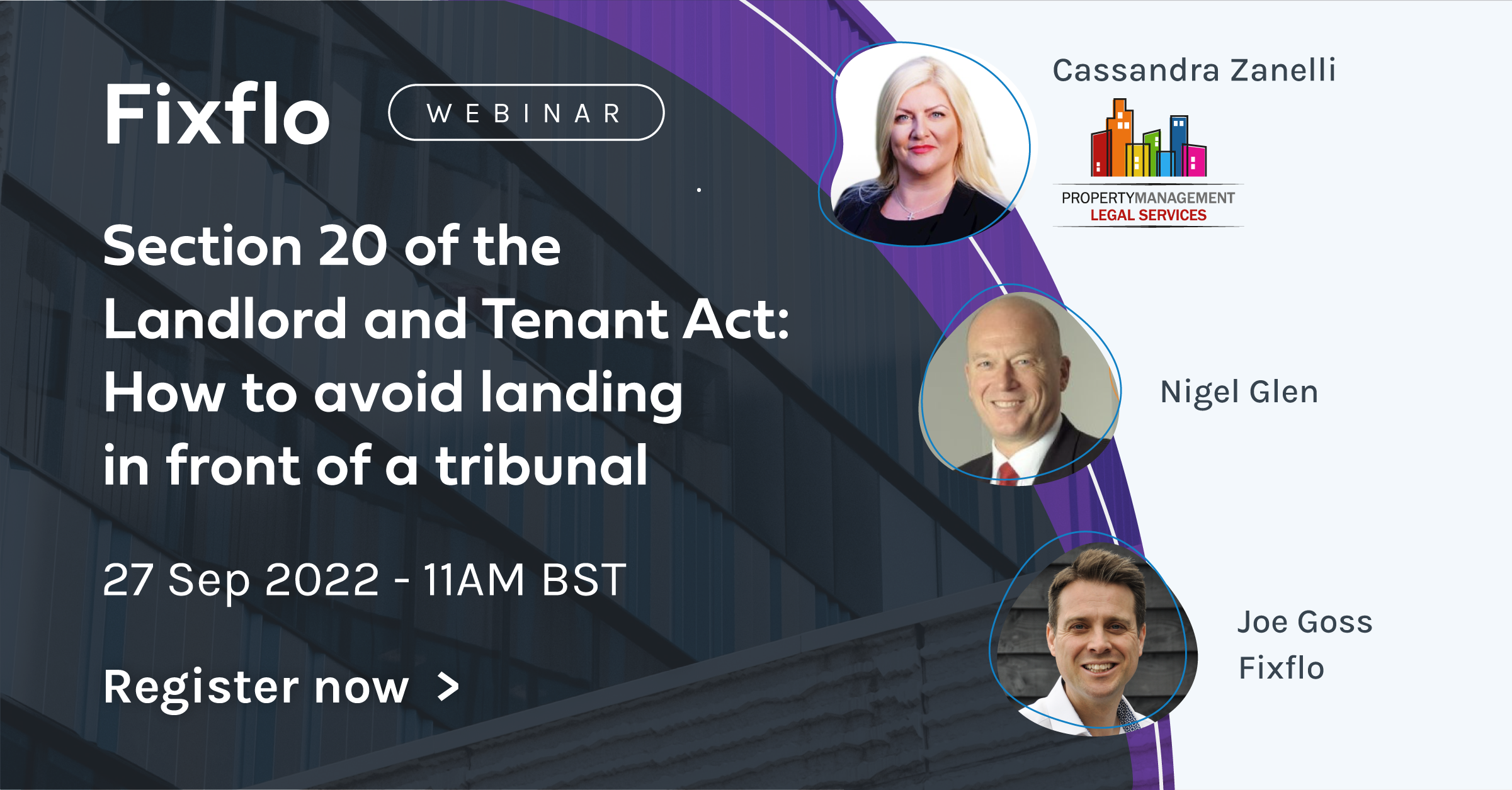Almost every block manager will have come across Section 20 of the Landlord and Tenant Act 1985 during their career. But while many will be used to the consultation process, fewer will be familiar with what sections 20C and 20D entail. These sections were introduced by the Building Safety Act 2022. They are yet to be in force.
Respectively, the sections relate to the limitation of the application of service charges towards the costs of legal/tribunal proceedings and the financing of remediation works. In order to implement them effectively, it’s imperative that both landlords and leaseholders are engaged and informed about the process.
What is Section 20C?
Section 20C allows leaseholders to prevent their landlord from claiming back legal costs from a Tribunal case as part of the service charge.
As it stands, it is common practice for freeholders to charge the legal costs they incur to the leaseholders’ service charge account. Under Section 20C of the Landlord and Tenant Act 1985, leaseholders can, however, make an application to ask the Tribunal to prevent the freeholder from doing so. The application is made by ticking the relevant box of the standard application to dispute service charges – and the decision is made entirely by the Tribunal.
There’s increasing evidence that all leaseholders need to engage with the application in order for it to be individually successful. If one unit offers to deal with the matter on behalf of another, the freeholder can argue that the order only applies to those who participated directly with the application.
What is Section 20D?
Section 20D concerns leaseholders paying for remediation works being carried out at a property. It compels landlords to investigate other funding options for these works, such as available grants, insurance policies or claims against relevant developers, before claiming costs back through the service charge.
Failure by the landlord to do so means that the tenant can make an application to the Tribunal, arguing that any or all of the costs for remediation should be excluded when the landlord calculates the service charge.
The measure is intended to stop landlords from unfairly lumbering leaseholders with unreasonable costs. However, it’s a double-edged issue because, like Section 20C, it depends heavily on due process and those involved having the experience and expertise to tackle the issue accurately.
As Section 20 faces increased scrutiny and the Government continues its campaign to protect leaseholders and tenants from rogue landlords, it remains to be seen if the act will be reformed at all to better suit the needs of leaseholders.
Find out more
Our Section 20 webinar took an in-depth look at the pitfalls of Section 20, and provided tips on how to follow sections C & D. Check out the recording to learn more from our experts, Nigel Glen, Executive Chair of The Property Institute, Cassandra Zanelli, CEO of Property Management Legal Services, and our very own Enterprise Sales Executive, Joe Goss.

BLOG DISCLAIMER
This article is intended for information purposes only and does not constitute legal advice. If you have any questions related to issues in this article, we strongly advise contacting a legal professional.
These blog posts are the work of Fixflo and are licensed under a Creative Commons Attribution-ShareAlike 3.0 Unported License. In summary, you are welcome to re-publish any of these blog posts but are asked to attribute Fixflo with an appropriate link to www.fixflo.com. Access to this blog is allowed only subject to the acceptance of these terms.


